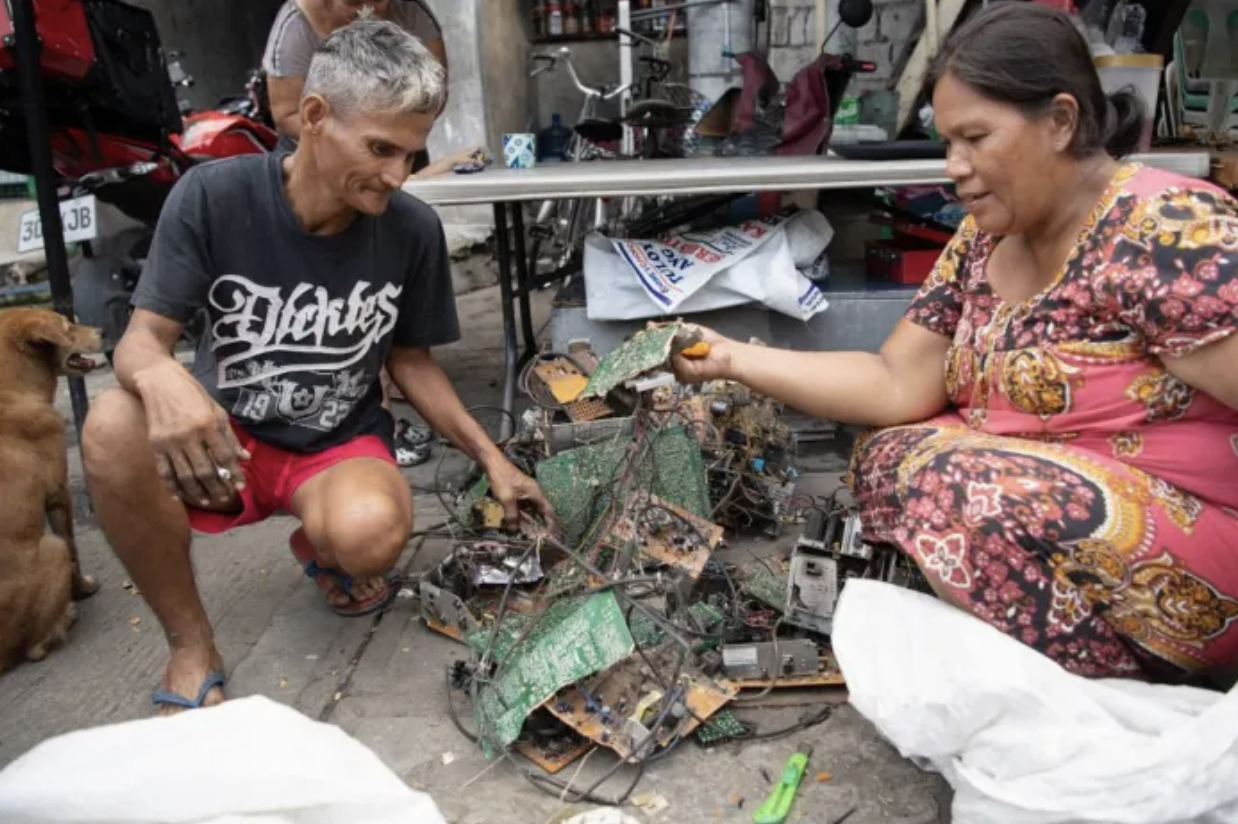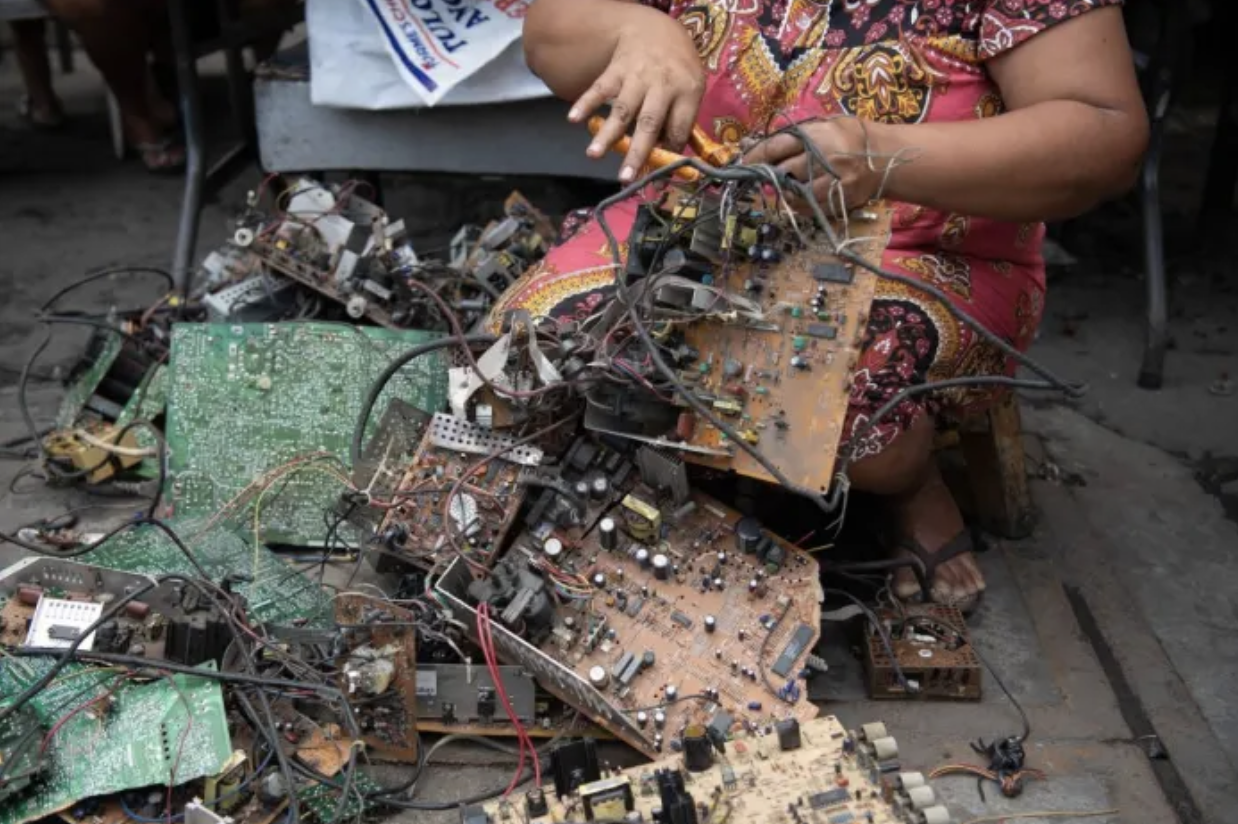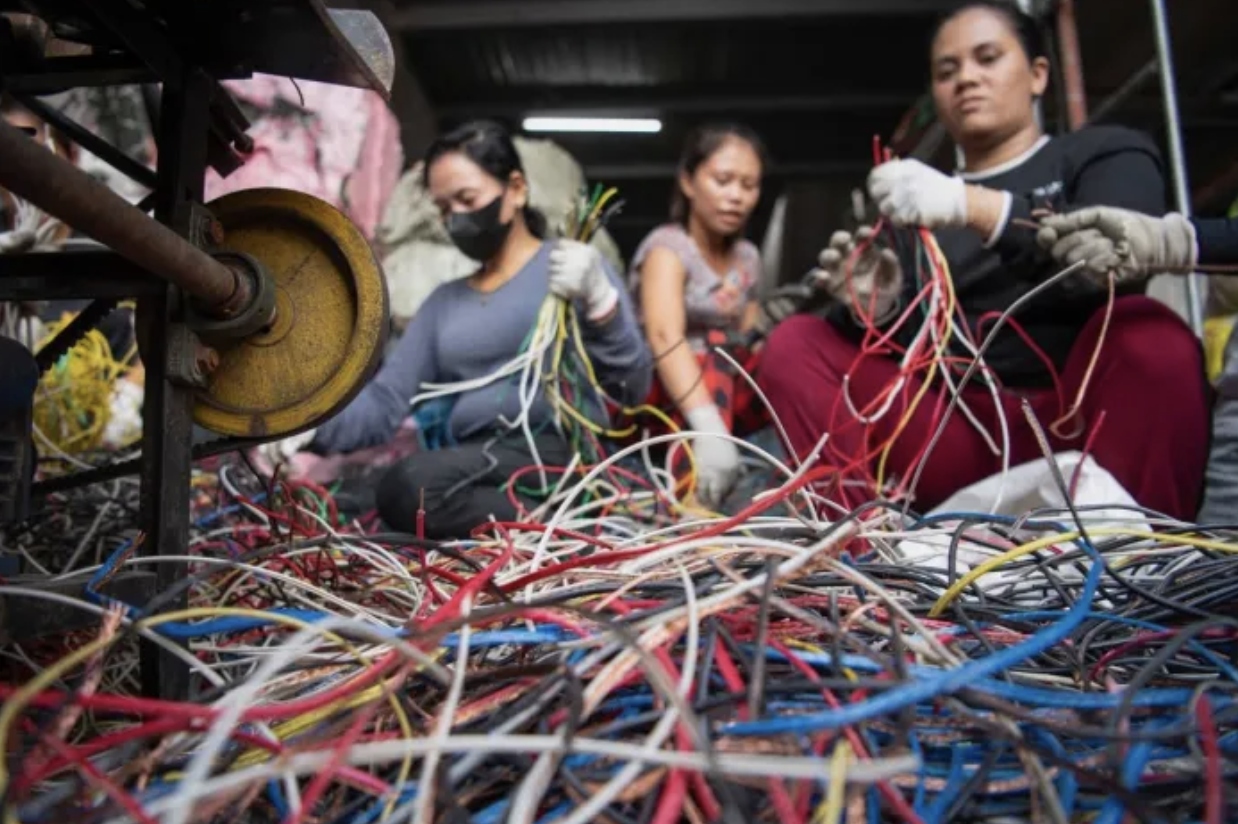The 47-year-old Manila resident began experiencing aching hands and blurred vision three years ago. His condition has worsened, and some days he can only watch as his wife and children work in his place.
Barsigan is a "mambabaklas" – someone who dismantles electronic scrap for nickel, aluminum, and copper. "This work helps us put food on the table and send our children to school," he said while working on Onyx Street, where hundreds of others do the same work.
 |
Dexter Barsigan (left) suffers from health problems after years of working in e-waste recycling in Manila. Photo: AFP/ TED ALJIBE |
To extract the metals, they often burn the plastic coating off wires, releasing a toxic mix of lead, mercury, and cadmium into the air.
Both the Philippine government and the Basel Convention (a global treaty on waste management) classify e-waste as hazardous. Irvin Cadavona, an environmental official, said e-waste poses many health risks, from cancer and neurological diseases to respiratory illnesses and birth defects.
Last year, the World Health Organization (WHO) warned that exposure to chemicals from e-waste can cause reduced lung function in children, while pregnant women face a higher risk of stillbirth and premature delivery.
Gelo Apostol, an environmental health expert from Ateneo de Manila University, said: "Manual dismantling is very dangerous and can lead to anemia, kidney and thyroid disease, and nerve damage".
 |
Rosalie Sedantes, Dexter Barsigan's wife, dismantles components from e-waste. Photo: AFP/ TED ALJIBE |
According to the United Nations, the Philippines is among the top e-waste producers in Southeast Asia, generating nearly 600,000 tons in 2022.
Workers in licensed facilities must adhere to strict guidelines, while independent workers like Barsigan lack training, regulations, and protective equipment. "I'm certain many are getting sick from e-waste exposure," Cadavona said.
Without a mask, Barsigan prefers dismantling computer motherboards because they fetch a high price, up to 470 pesos (approximately 8.57 USD) per kg. But according to Apostol, these components contain high concentrations of toxic metals that can cause neurological damage if inhaled.
Although illegal, burning wires to extract copper cores is common on Onyx Street. Doctor Rosana Milan, who runs a local health center, said her clinic has diagnosed respiratory problems in half of the 12,000 people living along the street, mostly children.
"It's very dangerous for children; they sit right next to their fathers while they burn the waste. Most of them suffer from pneumonia and respiratory illnesses, even though they have been vaccinated," Milan said.
Sammy Oligar, another e-waste worker, said his one-year-old grandson developed pneumonia from inhaling smoke from burning waste that drifted into their home. Many of his neighbors are also struggling with lung diseases.
 |
People strip wires for copper cores in a recycling workshop in Manila. Photo: AFP/ TED ALJIBE |
The humanitarian organization Medecins du Monde (MdM) is calling on the government to recognize these workers. "Health is not their top priority; putting food on the table is. If the work were legalized and regulated, there would be ways to protect them," said Eva Lecat, MdM coordinator.
However, Cadavona believes the informal nature of the work makes recognition difficult.
Researcher Apostol is concerned that the lack of specific local studies creates an "evidence gap," contributing to the lack of urgency in taking action. "The impact of many chemicals in e-waste has been proven. Are we going to wait until we have data on deaths before we act?" he asked.
As for Barsigan, fearing he cannot afford medical care, he avoids seeing a doctor, relying only on ointment and painkillers. He says he will resume work as soon as his hands feel better.
"If I stop, I feel like I’m giving up hope for a better life for my children," he said.
Minh Phuong (Manila Times)












